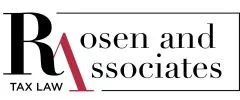Investment tax planning is a crucial strategy for maximizing the returns on your investments while minimizing the taxes you owe. By understanding the various tax-advantaged accounts, deductions, credits, and strategies available, you can effectively manage your investment portfolio and enhance your financial well-being. This article explores the key aspects of investment tax planning in Canada, providing you with actionable insights to optimize your investments.
The Importance of Investment Tax Planning
Investment tax planning involves strategically managing your investments to take advantage of tax benefits and minimize tax liabilities. Effective tax planning can:
- Increase After-Tax Returns: By minimizing the taxes you owe on investment income, you can keep more of your returns.
- Enhance Portfolio Growth: Tax-efficient investments grow faster due to the compounding effect of reinvested tax savings.
- Ensure Compliance: Proper tax planning helps you stay compliant with tax laws and avoid penalties.
Types of Investment Income
Understanding the different types of investment income is fundamental to effective tax planning. In Canada, investment income is typically classified into three categories:
- Interest Income: Earned from savings accounts, GICs, bonds, and other fixed-income investments. Interest income is taxed at your full marginal tax rate.
- Dividend Income: Received from shares of Canadian corporations. Eligible dividends benefit from the dividend tax credit, resulting in lower effective tax rates.
- Capital Gains: Realized when you sell an investment for more than its purchase price. Only 50% of capital gains are taxable up to the first $250,000, and any amount above that threshold is taxed at 66.6%, making them overall more tax-efficient than interest income.
Tax-Advantaged Accounts
Canada offers several tax-advantaged accounts that can help you grow your investments tax-efficiently:
Registered Retirement Savings Plan (RRSP):
- Contributions are tax-deductible, reducing your taxable income.
- Investments grow tax-deferred until withdrawal.
- Ideal for long-term retirement savings.
Tax-Free Savings Account (TFSA):
- Contributions are not tax-deductible, but withdrawals are tax-free.
- Investment growth is tax-free, making it ideal for a wide range of financial goals.
Registered Education Savings Plan (RESP):
- Contributions are not tax-deductible, but investment growth is tax-deferred.
- Withdrawals for educational purposes are taxed in the student's hands, usually at a lower rate.
Registered Disability Savings Plan (RDSP):
- Designed to provide long-term financial security for individuals with disabilities.
- Contributions are not tax-deductible, but investment growth is tax-deferred.
Tax-Efficient Investment Strategies
Implementing tax-efficient investment strategies can help you minimize your tax liabilities:
Asset Location:
- Place tax-inefficient investments (e.g., bonds, GICs) in tax-advantaged accounts like RRSPs and TFSAs.
- Hold tax-efficient investments (e.g., Canadian equities) in taxable accounts to benefit from the dividend tax credit and preferential capital gains tax rates.
Tax-Loss Harvesting:
- Sell losing investments to offset capital gains from winning investments to reduce your overall taxable income.
Income Splitting:
- Transfer income or capital to a lower-income spouse or family member through prescribed rate loans or family trusts.
- Utilize the lower tax brackets of family members to reduce the overall tax burden.
Dividend Reinvestment Plans (DRIPs):
- Automatically reinvest dividends to purchase additional shares without incurring immediate tax liabilities.
- Helps in compounding returns without the drag of taxes.
Common Tax Pitfalls to Avoid
Effective tax planning also involves avoiding common pitfalls that can increase your tax liabilities:
Over-contributing to Tax-Advantaged Accounts:
- Contributions exceeding the limit for RRSPs and TFSAs are subject to penalties.
- Ensure you stay within the contribution limits to avoid penalties and ensure your RRSP contribution room calculation is correct.
Ignoring the Tax Implications of Withdrawals:
- Withdrawals from RRSPs are fully taxable and can push you into a higher tax bracket.
- Plan withdrawals carefully, especially in retirement.
Neglecting to Report All Income:
- Failing to report all investment income can lead to penalties and interest charges.
- Ensure all income, including foreign income, is reported accurately.
Conclusion
Investment tax planning is an essential component of managing your finances and optimizing your investment returns. By understanding the different types of investment income, utilizing tax-advantaged accounts, and implementing tax-efficient strategies, you can significantly enhance your after-tax returns. Avoiding common tax pitfalls and staying informed about changes in tax laws will further ensure that your investment strategy remains robust and compliant.
The content of this article is intended to provide a general guide to the subject matter. Specialist advice should be sought about your specific circumstances.



